When it comes to buying camping gear, tent stakes are unlikely to be at the top of your list. You may even wonder if you need them at all, or if you can make do with a pair of bent forks and some twigs you found on the forest floor.
But speaking from personal experience, your tent can fly faster than you can run. Tent stakes are what lie between you and a cold uncomfortable night in the back of your car. Take it from me, it’s worth picking the right ones.

HelloTrail® is reader-supported. We may earn a commission, at no additional cost to you, on purchases made from our expert chosen links.
6 Stakes That Will Keep Your Tent Grounded
Unless you’re a camping gear super geek, you may not be aware of just how many types of tent stake there are. Let me enlighten you…
Hook Stakes
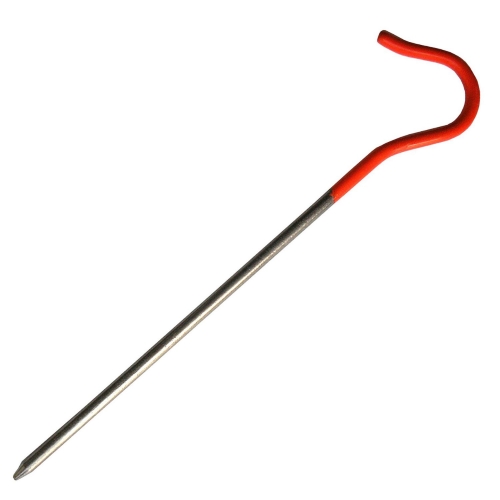
Most low-budget tents come with aluminum or galvanized steel hook stakes. If the ground is at optimum stake-plunging softness, then they’ll do the job, but they’re useless in sandy soil and surprisingly easy to bend when trying to push them into hard stony ground. Still, at least they’re cheap to replace like these hook stakes from Amazon.
V-stakes
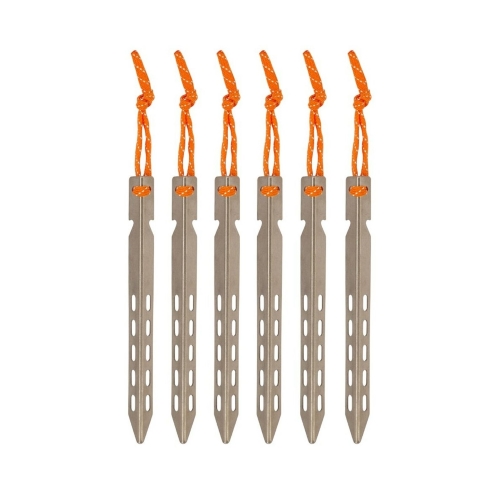
Next up are V stakes. The V-shaped design makes them easy to get into the ground and improves their holding power, though if you’re pushing them in by hand or foot they can be a bit sharp. If you are fans of the strength and light weight of titanium like we are then go for these ultralight titanium stakes on Amazon.
Y-stakes
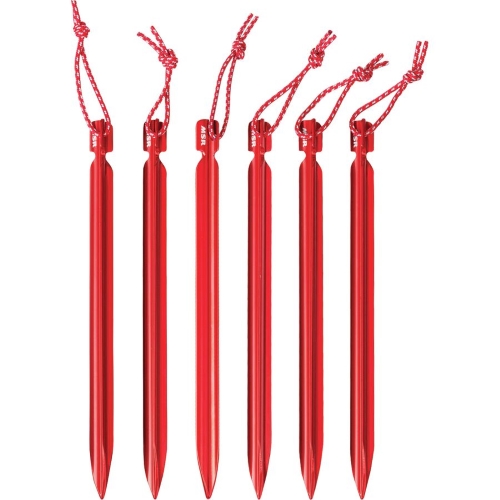
Three-sided Y stakes are sturdy, strong and a good all-rounder for most ground conditions. Unfortunately, one of the delightful ironies of camping is that the more effective a stake is at keeping your tent down, the tougher it is to get out of the ground. It’s hard to go wrong with any MSR product though and these y-stakes from REI are no different.
Nail Stakes
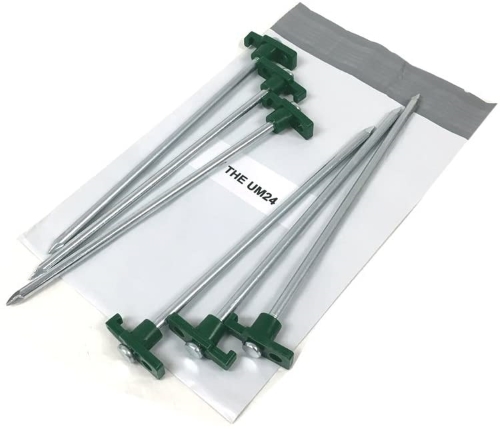
If your tent is larger than a penthouse apartment, then you’ll need some big stakes to keep it down in the wind. Nail stakes are long heavy-duty steel pegs that you can push or hammer into the ground. They’re big and heavy, but if you don’t have to carry them far, that won’t matter.
Snow Stakes
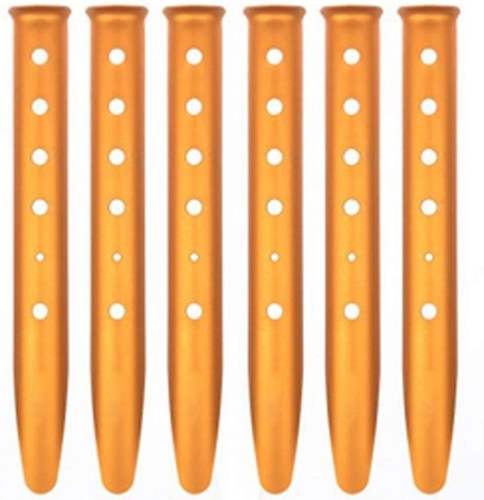
For most people, the camping season ends once snow starts to fall. But if you do want to try your hand at camping in winter, you’ll want to invest in some snow stakes. These have a U-shaped design and are longer and wider than standard tent stakes.
They’re designed for snow not ice, so don’t try hammering them into frozen ground unless you want to end up with bent metal. An added bonus of these snow stakes from Amazon is that they work just as well in sand!
Sand Stakes
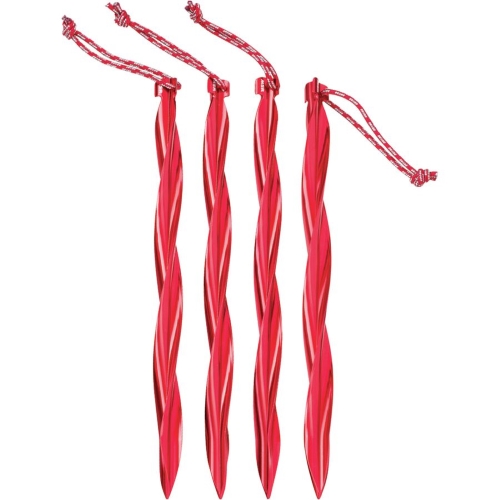
And, if you want something totally different, check out these MSR Cyclone stakes which have a funky spiral design. They’re specifically designed for soft soil and sand and will keep your tent on the ground in high winds — for a price. If you’re camping on the beach, these are the tent stakes to go for.
What About Factory Stakes?
Fact is, the stakes you get with even the best tents are pretty insubstantial. They may work fine for a couple of trips but hit a patch of hard earth and they’ll end up as bent as Uri Geller’s spoons.
If you’re a regular camper and you want your tent and your pegs to last more than a season, it’s worth investing in some better-quality tent stakes.
Things To Consider When Buying Tent Stakes
Before you pop down to the hardware store or dig out your credit card, get your priorities straight:

No Stakes No Problem
However organized you are, everyone forgets their tent stakes at least once. Or you may find yourself camping on rock (or earth that feels like rock) which not even Thor himself could hammer a nail into.
In these situations, large rocks and logs are your friends. Tie a piece of cord through the peg loops on your tent and wrap the other end around something heavy.
Nearby trees are also handy for securing your fly or tarp, and if you get really desperate, you could even try whittling your own stakes. If you’re a forgetful soul (or just like to be prepared), then it may be worth keeping some bits of cord permanently attached to your tent for this situation.
Wrapping It Up…
As you’ve probably gathered, when it comes to pegging your tent down, there’s a lot at stake. Sorry, couldn’t resist!
If you’re after a general-purpose tent stake that can cope with most conditions, I’d recommend going for either a Y-shaped design, such as the MSR Groundhog stakes, or the nail stakes for larger tents.
Don’t forget to always, ALWAYS carry some spares. If you don’t end up using them to replace broken or bent pegs, they’ll come in handy for tying up the dog or taking on the local vampire population.
